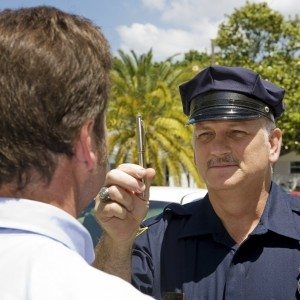
Roadside Drug Testing:
In 2016, Governor Snyder signed the Barbara J. and Thomas J. Swift Law. This new law stems from a fatal car accident that occurred on Mar 20, 2013 in Escanaba. A man, driving a logging truck, ran a red light and crashed into Thomas and Barbara Swift’s car. Thomas was killed instantly and Barbara died three days later. The man tested positive for THC, an ingredient in marijuana. He is now serving 5 – 15 years for reckless driving and driving under the influence of drugs causing a death.
This new law will allow/”require” preliminary roadside drug testing. It will initiate a yearlong pilot program in five counties across Michigan, which is believed to start sometime this year. Under this new law, certified drug recognition experts, who have probable cause to believe that the driver is under the influence of drugs, are allowed to take a mouth swab. If you refuse the mouth swab, you could be charged with a civil infraction or, if you are a commercial driver, a misdemeanor. The mouth swab would then be inserted into a machine that can detect if cannabis, cocaine, methamphetamines, and opiates are present in the sample of saliva. This saliva sample could potentially show the presence of drugs hours before it would be detected in urine samples. This new system would be somewhat similar to police officers conducting a breathalyzer test on someone they have reasonable cause to believe is intoxicated.
Driving while under the influence of drugs is a growing epidemic. The Michigan State Police publishes statistics involving crashes related to drugs. In 2006 there were 1,581 crashes involving drugs, and in 2015 the amount of crashes rose to 2,215. This shows that there has been a 40% increase in the amount of car crashes due to drugs. In Michigan, drivers under the influence of drugs now cause almost as many traffic deaths per year as drunk drivers. According to the Michigan State Police statistics, in 2016, drugged drivers caused 127 crashes that killed 141 people and drunk drivers caused 165 crashes and killed 176 people. Over the past decade, the amount of fatal drunk driving crashes has decreased by 36%, while those caused by drugged drivers has increased 263%. Although, the amount of fatal drugged driving crashes has not surpassed the amount of drunken driving crashes, it is believed to be too attributed to the lack of drug testing. Drivers are not normally tested for drugs on the scene of an accident/traffic stops. This new law is going to make drug testing more readily available.
A 2014 National Survey on Drug Use and Health reported that 10 million people admitted to driving under the influence of illicit drugs during the prior year. The survey also showed that men were more likely than women to drive under the influence of drugs, and that people between the ages of 18 -25 were more likely to drive after taking drugs. A study by the University of Michigan Transportation Research Institute looked at the times of traffic crashes from 2011-2015. They found that crashes caused by drunk drivers were more concentrated, usually at night and on weekends, and drivers impaired by drugs had no pattern and were spread evenly throughout the week.
In Michigan, it is illegal to drive while intoxicated, or impaired, by alcohol, illegal drugs, and some prescription medications. Michigan is a zero-tolerance state. This means that anyone can be prosecuted for any amount of cocaine or Schedule 1 drugs in their system. Someone who has taken legally prescribed drugs may also be prosecuted if an officer believes that they were impaired while driving due to their medication. It is unknown how this new program will affect medical marijuana users, as marijuana can be detected hours or days later.
Don’t take a risk on your rights—call one of our Troy Michigan Criminal Defense Attorneys at (248) 398-7100 for a free consultation or contact us with a private message, we can help you get answer, figure out a plan of attack, and execute. Get the results you need.
Operating While Visibly Impaired:
(OWVI) means that because of alcohol or other drugs, your ability to operate a motor vehicle was visibly impaired.
Operating While Intoxicated:
(OWI) includes 3 types of violations:
- Alcohol or drugs in your body substantially affected your ability to operate a motor vehicle safely.
- A bodily alcohol content (BAC) at or above 0.08. This level can be determined through a chemical test.
- High BAC means the alcohol level in your body was at or above 0.17. This level can be determined through a chemical test.
Operating With Any Presence of a Schedule 1 Drug or Cocaine:
(OWPD) means having even a small trace of these drugs in your body, even if you do not appear to be intoxicated or impaired. This can be determined through a chemical test.
Under Age 21 Operating With Any Bodily Alcohol Content:
(Zero Tolerance) means having a BAC of 0.02 to 0.07, or any presence of alcohol in your body other than alcohol that is consumed at a generally recognized religious ceremony.
Don’t take a risk on your rights—call one of our Troy Michigan Criminal Defense Attorneys at (248) 398-7100 for a free consultation or contact us with a private message, we can help you get answer, figure out a plan of attack, and execute. Get the results you need.


